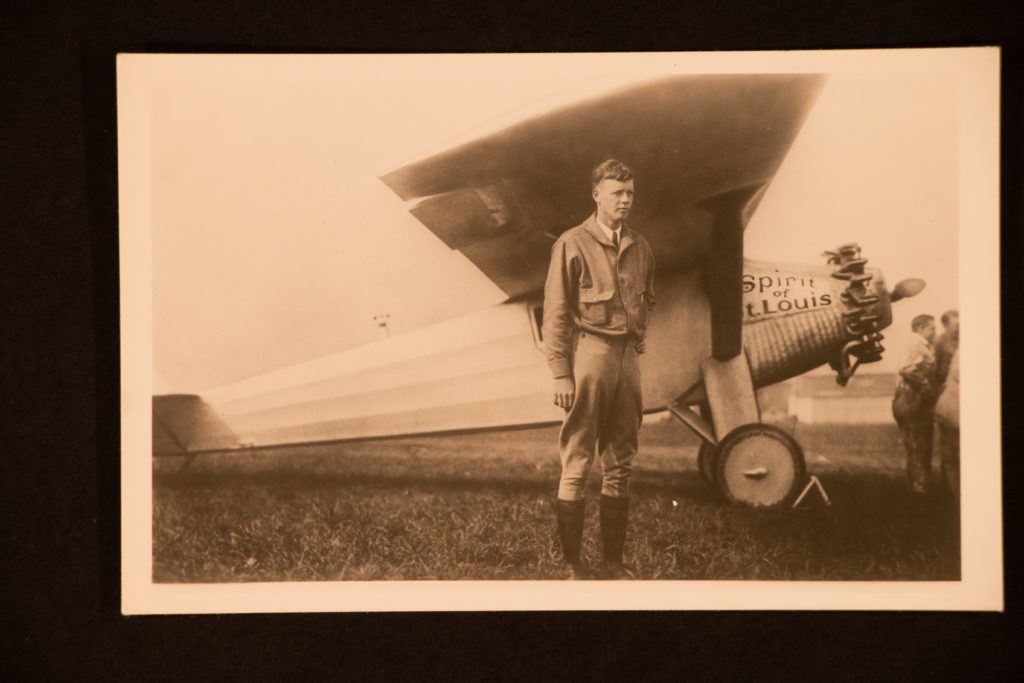Orchestra Miami takes flight with two aviation rarities
The 95th anniversary of the founding of Pan American World Airways was celebrated in style on Saturday night by conductor Elaine Rinaldi and Orchestra Miami. Rarely heard works by Kurt Weill and Marc Blitzstein were performed in the airline’s one remaining airplane hangar in Coconut Grove.
The site was later taken over by the United States Coast Guard and is now the home of Shake-A-Leg Miami which aids children and disabled people with boating and water activities. More than a mere concert performance, the program was fully staged including dance and film as prominent components.
Lindbergh’s Flight by Kurt Weill dramatizes the historic 1927 flight from New York to Paris by pioneering aviator Charles Lindbergh (who later worked for Pan Am). Set to a text by Berthold Brecht, Weill’s most famous and frequent collaborator, the score comes from the cultural milieu of Weimar Germany. Performed in an English translation by Lys Symonette, the nearly forty-five minute opus traces the pilot’s journey through fog and a snowstorm to a hero’s welcome at Le Bourget Airport. A narrator sets the scene for each of the fifteen sections or chapters with a tenor voicing the words of the protagonist.
Weill’s musical depiction runs the gamut from neo-Baroque to astringent modernism to tunes that would not have been out of place in such Weill-Brecht collaborations as The Three Penny Opera or Happy End. The work is a fascinating, fast-moving musical hybrid that proved well worth hearing.
Actress Vanessa Elise was a fluent narrator. As Lindbergh, Gregory Schmidt’s lyric tenor conveyed the pilot’s emotional rollercoaster from doubt, fear and despair to assurance in firm tones, with a powerful top range. Schmidt’s diction was clear, and the the text emerged with transparency and emotional heft.
Philip Kalmanovitch’s baritone was firm and resonant in several episodes. As the voice of the weary Lindbergh’s wish to sleep (which he rejects), the depth and warmth of Neil Nelson’s bass-baritone was just as impressive as in his recent portrayal of Monterone in Florida Grand Opera’s production of Rigoletto.
Women’s voices from Tropical Wave and a contingent of the Gay Men’s Chorus of South Florida sang with vociferous enthusiasm and solidity. Members of the Rosie Herrera Dance Theatre portrayed the sea and the emotional turmoil of the pilot in bold choreographic patterns. Michael Yawney’s staging, aided by Bobby Brinson’s subtle lighting, infused the cantata with drama and intimate spectacle. Video of clouds and storms and grainy film of Lindbergh’s actual landing amid jubilant crowds vividly enhanced the drama.
Rinaldi displayed full command of the score, capturing both the cabaret jazz and thorny undercurrent of Weill’s divergent styles. The orchestral playing proved lively, precise and incisive. Since the performers were in the hangar and most of the audience seated outdoors, amplification was necessary but it was utilized skillfully.
The actor and director John Houseman once remarked thar Marc Blitzstein wanted to be both Arnold Schoenberg (who he had briefly studied with) and Richard Rodgers. Both of those impulses are evident in his Airborne Symphony.
First played in 1946 (with Leonard Bernstein conducting and Orson Welles as narrator), the work originally was intended as a soundtrack to a film which was never competed. The work encompasses man’s hope to take to the air, the Wright brothers’ historic first flight at Kitty Hawk, the rise of Hitler and Nazism, American and British airpower winning World War II and a warning about future destruction.
At times, the music betrays its cinematic origins but there is an irresistible, quintessentially American ethos in Blitzstein’s invention that triumphantly captures triumph and tragedy. The narrative commentary recalls the wartime radio propaganda plays of Norman Corwin. Acerbic harmonies and terse patterns accompany description of Italian bombing of Spain and the Broadway Blitzstein (of The Cradle Will Rock and the underrated Juno) shines through in depictions of the American and British air crews. The melody of the “Ballad of the Bombardier” could have been written by Jerome Kern. That all of these seemingly disparate inclinations come together so well conveys Blitzstein’s mastery of orchestral and vocal writing.
Rinaldi led a well-rehearsed, strongly played and sung reading of this epic creation. The large orchestral forces, including a full wind and brass contingent, played with flexibility and the male chorus voiced the airmen’s songs in vigorous, strong tones. Rinaldi brought out the score’s Bernstein and Copland influences and exercised strong control over the massed forces. Kalmanovitch displayed an old-school theater baritone, bringing conviction to the bombardier’s pean to his beloved back home. Tenor David Margulis’ light timbre blended to fine effect in duo with Kalmanovitch’s darker sound.
Herrera and Leah Verier-Dunn’s choreography telegraphed the horror of death, adeptly portrayed by the six dancers. Harrowing film of Nazi rallies and the ravages of war accompanied Blitzstein’s musical message to powerful effect. Elise’s narration pulled no theatrical punches, her description of killing and destruction graphic in impact. Yawney’s staging matched Blitzstein’s vision while remaining true to the music’s shifting moods.
Kudos to Elaine Rinaldi for presenting a one-of-a-kind concert and for reviving two worthy scores that would have been unlikely to ever have been otherwise heard in South Florida—or anywhere else.
Posted in Performances
Leave a Comment
Sun Apr 10, 2022
at 12:13 pm
No Comments
